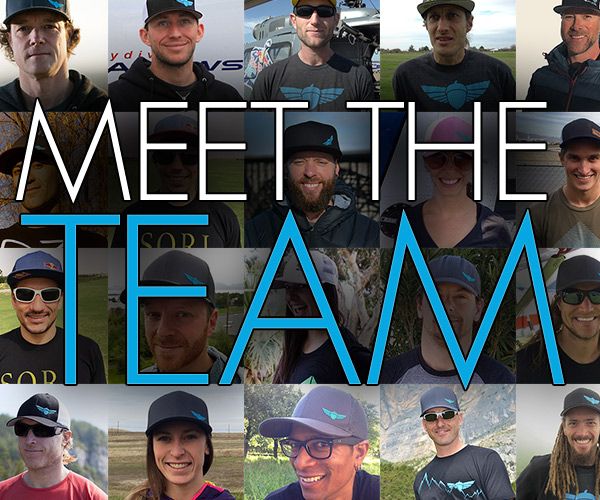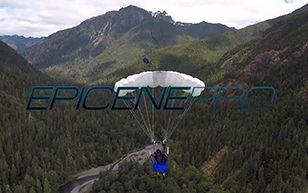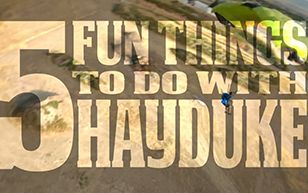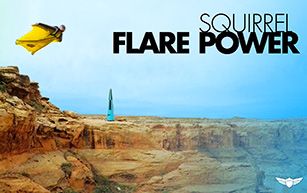WS Progression 1: Your FFC
The first in a 4-part series on WS by Matt Gerdes and Taya Weiss, things you should know about your first flight course. If you already took your FFC you can use this article to see if you missed something. If you're planning to take one in the future then you'll know what your instructor should cover...
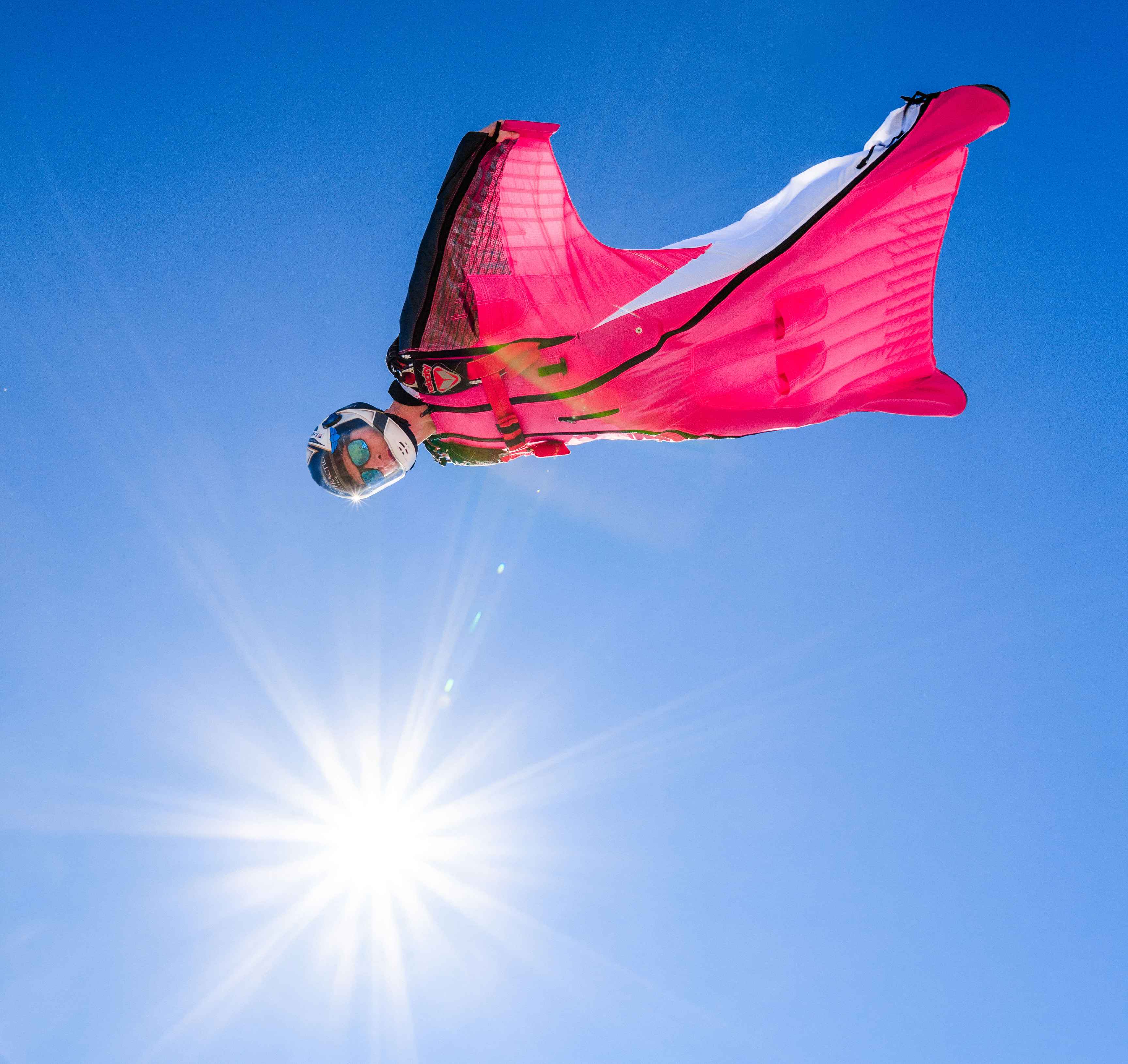
Your FFC (First Flight Course)
(A summary of everything you should learn during your First Flight Course.)
“200 skydives” – It sounds like a lot, when you don’t yet have them. But 200 skydives is not many, and in some cases it’s not enough to prepare people for the added complexity of flying a wingsuit, which reduces safety and comfort in almost every area of skydiving from exiting the plane to deploying your parachute...
For many people, this number is a formidable barrier to entry and if wingsuit flying is your goal, it can be tempting to begin immediately at jump number 201. If you can, wait longer. The more skydives and tunnel time you log, the more you will learn to fly your body in different orientations, experience and recover from instability in freefall, and become familiar with your gear. All of these things will give you a faster learning curve in a wingsuit and will make you a better overall pilot as you progress.
Regardless of when you begin wingsuit flying, or when you began it, here are the things that should be covered in every FFC (First Flight Course). We’re not going to delve into the details of every topic, as that’s more of a book than an article, but we do want to highlight some critical items that every new wingsuit pilot should understand and experience before beginning their solo progression.
In subsequent articles, we will cover best practices for everything from exiting the plane to breaking off. This first instalment is a sort of checklist for your first wingsuit jumps with an instructor.
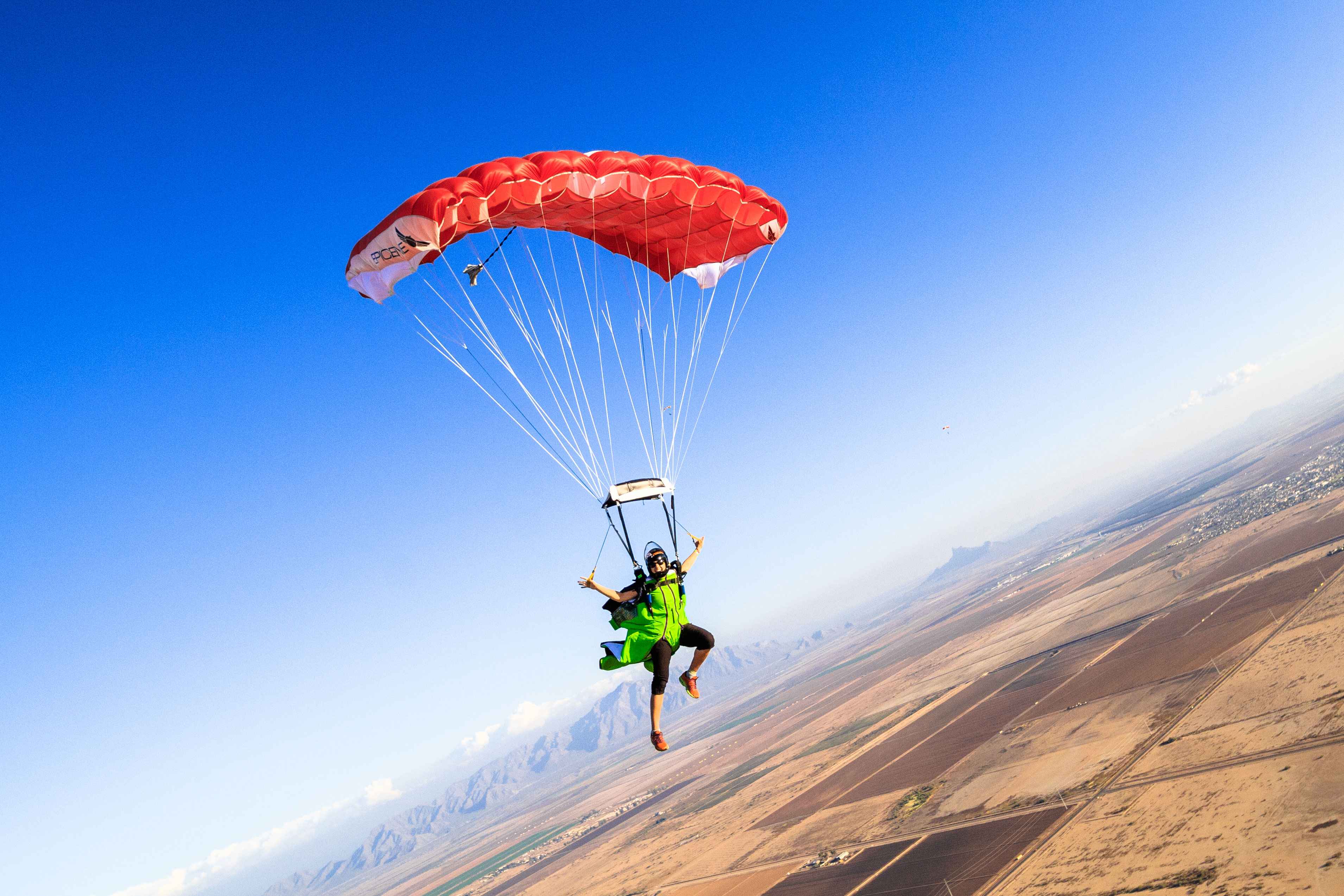
Your Equipment
Wingsuit flying requires that you adapt your equipment to the practice. While some rigs are not “freefly friendly”, most rigs - even modern ones - are not “wingsuit friendly”. Make sure that your equipment is fully appropriate for your first wingsuit jump before your FFC.
AAD
Automatic Activation Devices are an important safety tool for wingsuit skydiving. There is no downside to having one when flying a wingsuit. There have been cases where an AAD did not fire during out of control flight due to slow descent rate or varying pressure areas. However, there have been several documented saves and AADs should be considered mandatory.
- Wingsuits have high forward speeds and mid-air collisions are a risk
- Contact with an airplane on exit is also a risk
RSL
- Wingsuiting does not significantly alter decision-making about whether to have an RSL.
- An RSL is generally recommended for newer skydivers.
- Most expert wingsuit pilots choose to use an RSL / MARD device.
RESERVE
- Know your reserve in case you have to fly it.
- The reserve should be loaded no higher than the main canopy
- Wing loading near 1:1 provides more margin for a safe landing in case of injury or unconsciousness.
MAIN CANOPY
- Docile (non-elliptical) designs should be considered mandatory. Seven-cell designs are far superior.
- Low-bulk / lightweight / semi-permeable fabric designs are preferable, and provide significantly enhanced opening performance compared to ZP designs.
- Wing loading should be no more than 1.3:1 (unless canopy is over 170 sq. ft.), and lines should be in trim
DEPLOYMENT BAG
- Semi-stowless bags help to provide smoother deployments. Rubber bands create resistance during deployment that can add to unwanted movement and asymmetry, leading to line twists.
- If using a standard bag, leave 18 inches of line unstowed and carefully S-folded at bottom of main pack tray. This allows the bag to move further out of the burble before hitting first resistance.
BRIDLE
An 8 to 9-foot bridle (measured from pin to pilot chute) extends the pilot chute further from the wingsuit wake turbulence. Bridles shorter than 7 feet increase risk of the pilot chute being affected by wake turbulence and leading to a PC-in-tow.
PILOT CHUTE
- Minimum PC size for wingsuiting is 26 inches, and 28 to 30 inches is strongly recommended. Pilot chute condition and design, not just size, is important to wingsuit deployments. PC should be constructed with ZP material and be in excellent condition.
- The weight and shape of the handle will contribute to PC stability, deployment, and therefore effectiveness – light handles are required. Hackies and heavy PVC handles should not be used.
- A very lightweight, i.e. carbon fiber handle, is preferred. Vented toroidal-shape PCs have proven to be more stable, and are recommended.
OPEN CORNERS MODIFICATION
Any master rigger can modify a container to “open the corners” at the bottom of the main pack tray. The bottom flap of the main tray opens completely (lying flat when open on the floor) reducing the likelihood of the deployment bag snagging on a corner during a more horizontal extraction (due to the forward movement of the wingsuit skydiver).
WINGSUIT
Your FFC instructor should explain the processes by which a wingsuit inflates and generates lift. They should define: Pitch; Angle of Attack (“AoA”); Airspeed vs Groundspeed; Anhedral vs Dihedral; Body Configuration vs Body Position, and how these differ and are independent from Pitch and AoA.
The suit you use for your first jumps should be deemed by the manufacturer to be suitable for FFC use.
When you learn to attach your suit to your harness-container system, use a system that is clear and repeatable to build good habits. Always verify before gearing up: Handles, Chest Strap, Leg Straps:
- Handles are accessible, secured, and not affected by the suit.
- Chest strap is out and available to be routed properly over the suit.
- Leg straps are correctly placed inside the suit, ready to be secured on the pilot.
ACCESSORIES
- Helmets are mandatory.
- An audible altimeter is required for wingsuit skydiving. The reduced vertical speed can be a factor in loss of altitude awareness. We recommend that altitudes for first WS jumps a be set to 6500 feet (break-off or “no more work”), 5500 feet (initiate deployment), 2500+ feet (decision altitude).
- Discuss and adjust decision altitude, if necessary. Wingsuits add extra time to reserve procedures, add additional risk of line twists under reserve, etc.
- Activate or select “Slow Fall Mode” if available on your audible altimeter model.
- A visual altimeter mounted on the hand (below wrist), mud-flap, or chest strap, is required. Wrist-mount altimeters are covered by the wingsuit during flight and are not useful.

Learning to Gear Up and Prepare
Wingsuits require a little extra time to prepare - manifest accordingly. You’ll need to gear up on the 20 minute call to allow time for practice touches and review in full gear.
Gear up in order of skydiving priorities: RIG FIRST, then wingsuit.
- Leg straps fastened and tight
- Chest strap correctly routed
- Ready to survive a skydive
- Wingsuit adjustments are LAST (booties on, zipped up)
- Visual altimeter is zeroed and secured on hand/mud flap/chest strap
Your coach should complete a full gear check, including verifying that your audible altimeter is set to correct altitudes.
Creep it out. On the creeper, your coach should cover various body configurations, adjustments to AoA and heading, practice touches with smooth transitions back to flight, wave off, and mock deployments.
Starting at the mockup, your coach should cover:
- Spotting in the door: locate dropzone (which will (usually) be behind rather than right below aircraft)
- Climb out, check in
- Exit
- Walk flight pattern
- 6,500 ft: Wave off, check spot, adjust if necessary
- 5,500 ft: Wave off, deploy
- Post-deployment procedures
Prior to boarding, another gear check should be completed. Your leg wing should be on and fully zipped before boarding the plane. After takeoff, review the jump plan step by step, and communicate with the pilot about aircraft settings for a wingsuit exit.
Prior to exit, a final gear check should be completed. Ensure that you touch handles and visualize emergency procedures. Check that cutaway and reserve handles are fully available and securely in place, before moving to the door of the aircraft.
The Flight
Your first jump will start with a careful spot, by you: remember that wingsuits rarely exit directly over the DZ. You must have a clear visual on the DZ. Confirm to the coach that you see it.
In the following installment, we’ll cover good exit technique and other wingsuit flight topics in greater detail, and for pilots of all levels. For now, here are the points that should be covered during your first few jumps during your FFC:
PRACTICE TOUCHES
We recommend doing two early in your first jump, preferably performed on jump run before any other maneuvers. If long spot, one or more can be performed after one 90-degree turn.
NAVIGATION
Your first jump will involve a simple pattern of flight, bringing you back to the appropriate place to open your parachute near the DZ. Turns should be flat, controlled, and limited to 90 degrees at a time.
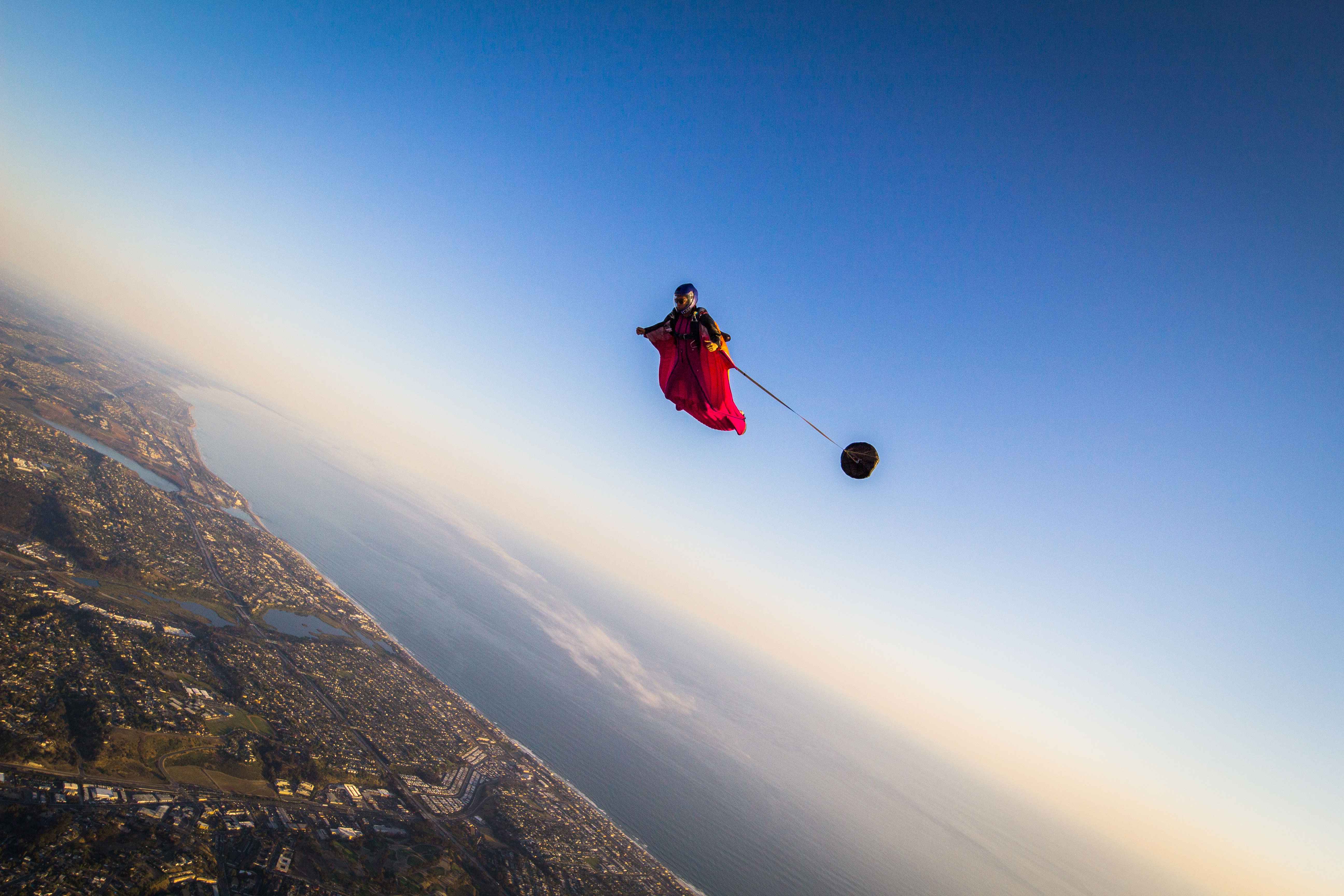
SAFE BREAK OFF AND DEPLOYMENT
Break-off should occur higher on your first few jumps - your alarms are set to start at 6,500 ft and this is a good altitude to check your location and adjust as necessary to arrive at the deployment zone for your flight pattern. As with any skydive, we wave off before deployment in a wingsuit. Some coaches teach leg kicks, but we’ve seen this become an excellent source of control-loss for newer pilots, with little added benefit on a 2-way. Wave off with hands only to begin with.
The objectives for your first few flights are to learn to exit safely, navigate with control and precision, deploy your parachute correctly, and land on the DZ. During these coached jumps and the subsequent de-briefs, your instructor should cover techniques for an efficient but relaxed and “neutral” flight at a responsible AoA (not near-stall). You should become comfortable with spotting your exit (it will be longer than you’re used to) and flying a pattern that does not interfere with any other groups. You should be able to gauge airspeed and aircraft settings on jump run to determine if it’s safe to exit, complete several different types of exits, and be briefed on floating (front and rear), backfly exits, and exiting both poised and running from inside the plane.
During flight, your instructor should work with you to make vertical and horizontal adjustments relative to a base in a formation, as well as speed and angle changes to approach and decelerate with control, relative to the base. You should finish the FFC with a basic understanding of energy management and how to achieve and control changes in airspeed.
Hopefully, your coach is hooked up with The Sigma, and the final step will be a First Flight Course Merit which is an asset if you visit other DZs. Either way, make sure to get your logbook signed off with a description of what you achieved and whether you are cleared for solo supervision. At the conclusion of your FFC, you should have demonstrated the basic skills listed above, as well as shown the ability to self-supervise as you improve upon the basics. And hopefully you’re hooked!
In the following three weekly instalments, we’ll cover the various parts of a wingsuit skydive in more detail, and for pilots of all abilities...
Wingsuit Deployment Series
This article is one of a 4-part series by Matt Gerdes and Taya Weiss on Wingsuit Progression. Here are links to the other articles:

